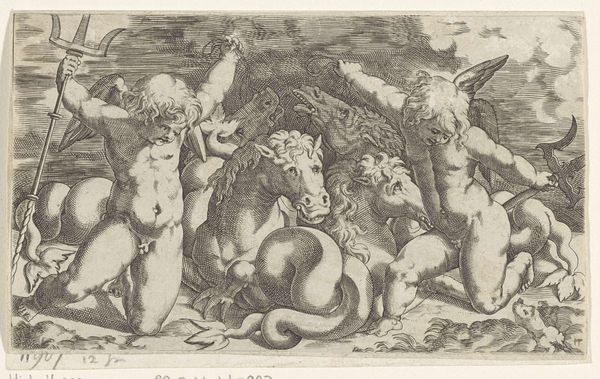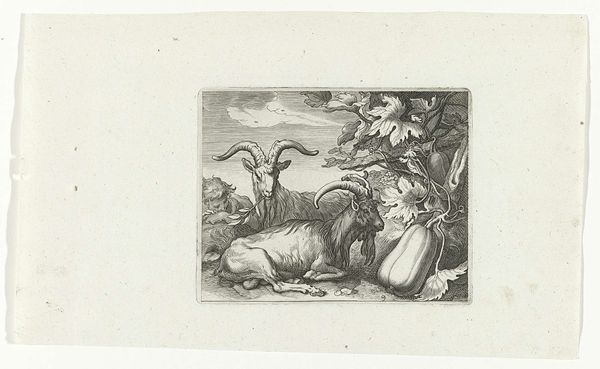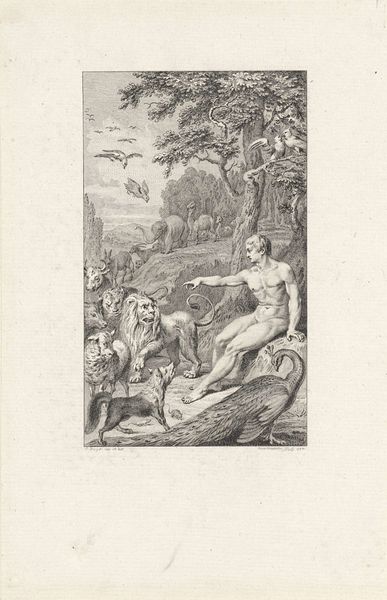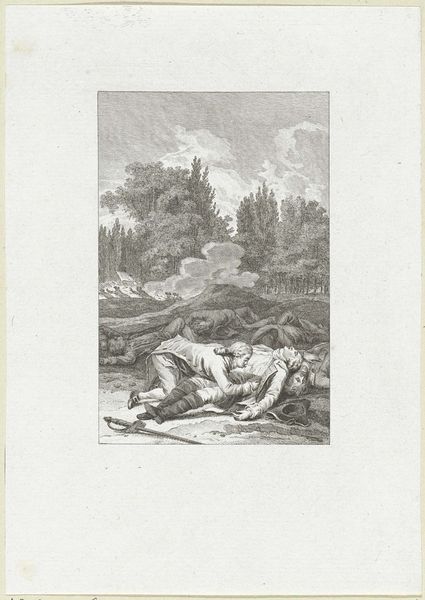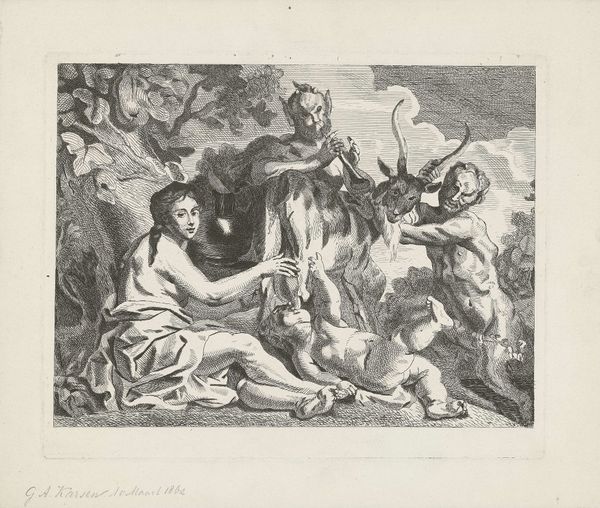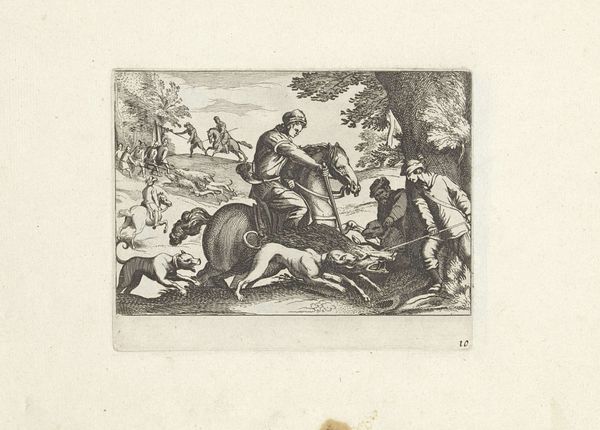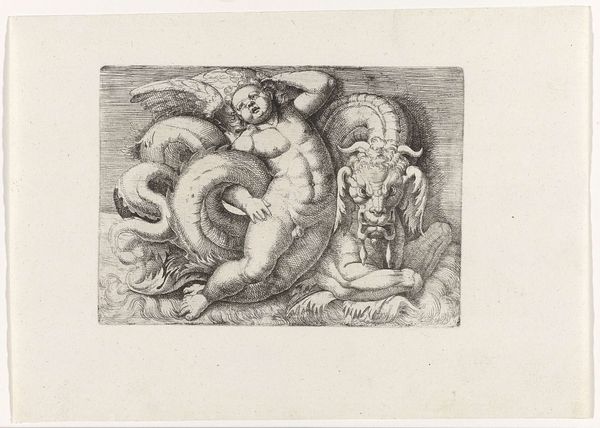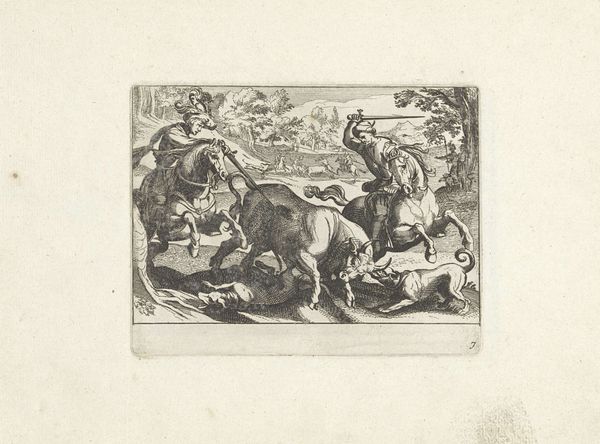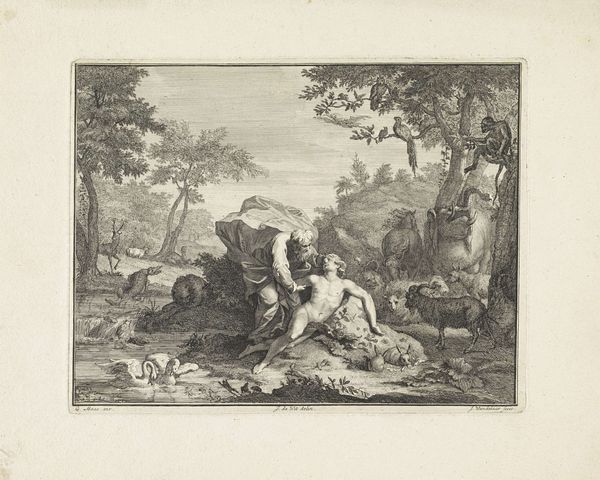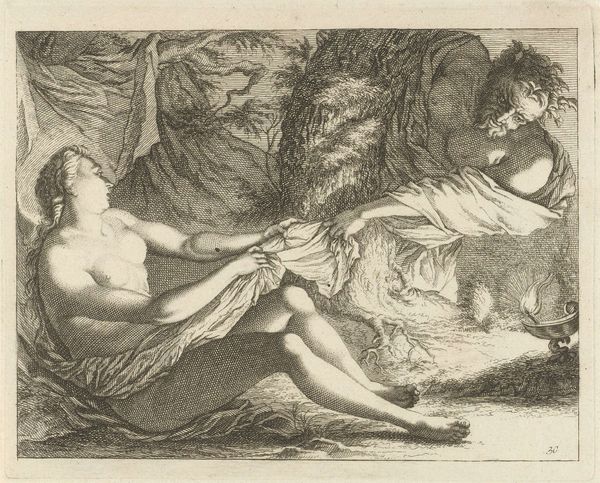
engraving
#
allegory
#
baroque
#
old engraving style
#
figuration
#
history-painting
#
nude
#
engraving
#
realism
Dimensions: height 125 mm, width 166 mm
Copyright: Rijks Museum: Open Domain
Curator: Augustinus Terwesten's engraving, "Venus Mourning the Dead Adonis," created between 1672 and 1677, is quite a sight. Editor: My first impression is melancholic. The lines are delicate, but the scene itself feels weighty with grief. Curator: Absolutely. The composition draws our eyes to Adonis's lifeless form. Consider the way Terwesten employs the burin to suggest form and texture—the meticulous hatching creates a remarkable range of tonal values. The linearity underscores the inherent fragility of earthly existence. Editor: But the labor! Imagine the sheer number of tiny, deliberate cuts into that copperplate. The original prints would have been incredibly precious items, indicative of skill, craftsmanship and high culture. Were these distributed among an elite audience, framing a cultural understanding? Curator: Precisely. It's a clear embodiment of Baroque aesthetics, striving to evoke powerful emotion through dynamic compositions. We witness the naked Venus above him lamenting while another female figure and two putti come to his aid. Venus’s arm gesture rises in the sky to potentially signify heavenly protection. The nudity itself also serves to elevate the scene to an allegorical plane, heightening its significance. Editor: The act of printmaking transforms this image from a personal, possibly singular artwork into a replicable commodity. We should think about the workshop. Were assistants involved in pulling proofs? Were these images distributed as independent prints or part of larger publications that influenced artistic standards? And even, which type of paper was employed in the print production and distribution? Curator: These considerations invite richer dialogue on the meaning itself and speak directly to art’s capacity to stir human feeling through line, form and the symbolic weight of the mythological narrative. Editor: Indeed. We should not only engage the artistic finesse behind it, but consider that the process used carries social dimensions that are key in Baroque painting and printmaking’s significance. Curator: A perspective that grounds our interpretations in materiality and history. Thank you. Editor: My pleasure. By contemplating Terwesten's meticulous process, we begin to realize that the story transcends mere mythological presentation.
Comments
No comments
Be the first to comment and join the conversation on the ultimate creative platform.

